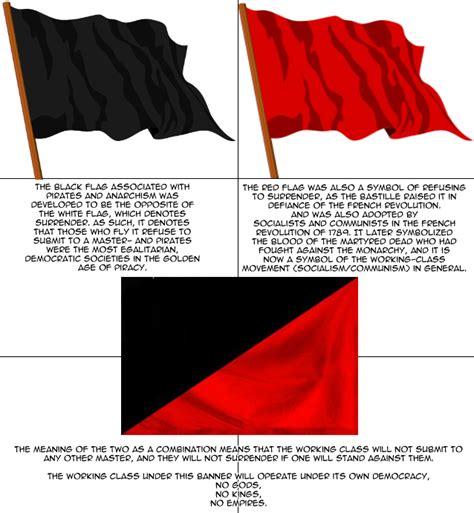Breaking News


Popular News


Explore the symbolism and themes of The Flying Phantom Ship, from redemption to revenge, in this insightful blog post on the power of love and justice.The Flying Phantom Ship is a classic piece of literature that has captivated readers for centuries. As we delve into this timeless tale, it’s important to understand the symbolism and themes that are woven into the narrative. From the mysterious Ghost Ship to the powerful themes of redemption, love, revenge, and justice, there are layers of meaning to uncover within the pages of this story. In this blog post, we will explore the various symbols and themes present in The Flying Phantom Ship, shedding light on the deeper messages that the author intended to convey. By gaining a deeper understanding of the symbolism and themes within the story, we can enhance our appreciation for the timeless tale and gain valuable insights into the human experience. Join us as we embark on a journey to unravel the hidden meanings of The Flying Phantom Ship.
Contents

The Flying Phantom Ship is an eerie and captivating tale that has captured the imagination of readers for generations. Written by the renowned author Frederick Marryat, this novel weaves a hauntingly beautiful story that explores themes of revenge, justice, and love. Set against the backdrop of the high seas, the story follows the adventures of the mysterious Captain Vanderdecken and his cursed ship as they roam the oceans in search of redemption.
Symbolism and imagery play a crucial role in Marryat’s narrative, as the ghost ship serves as a powerful metaphor for the consequences of unchecked ambition and the pursuit of vengeance. The black flag that adorns the ship symbolizes the darkness and desperation that haunts its crew, while the recurring motif of love and redemption offers a glimmer of hope in the face of despair.
In this blog post, we will delve deeper into the symbolism and themes that permeate Marryat’s timeless tale, exploring the rich layers of meaning that make The Flying Phantom Ship a classic of maritime literature.

Symbolism of the Ghost Ship
In The Flying Phantom Ship, the ghost ship is a powerful symbol that represents a variety of themes and ideas. One of the most prominent symbols in the novel is the ghost ship, which appears to be a vessel that is not bound by the physical laws of the world, and is thus able to haunt the seas for eternity. This ghost ship serves as a symbol of the unknown, the unknowable, and the potential for redemption for the characters in the book. The ship’s spectral and supernatural qualities stand as a reflection of the unresolved business of the characters, as well as the universal quest for understanding the mysteries of the world.
Additionally, the ghost ship acts as a representation of the characters’ past mistakes, regrets, and the consequences of their actions. This symbolism is most evident in the interactions between the crew and the ghost ship, which represent the characters’ past mistakes coming back to haunt them. The ship serves as a constant reminder of the characters’ inability to escape the repercussions of their actions, further emphasizing the theme of redemption in the novel. The symbolism of the ghost ship also adds depth and complexity to the novel, enriching the reader’s understanding of the characters’ motivations and internal struggles.
The ghost ship can also be interpreted as a symbol of the inevitability of fate, and the persistence of unresolved issues. This interpretation is further supported by the recurring appearance of the ghost ship throughout the novel, serving as a constant reminder of the characters’ past transgressions. Furthermore, the ghost ship embodies the idea of eternal punishment, as the characters are forced to confront their past mistakes and seek redemption in the face of an unrelenting and unforgiving force.
In conclusion, the symbolism of the ghost ship in The Flying Phantom Ship serves as a powerful representation of the characters’ internal struggles, the theme of redemption, and the inevitability of fate. By understanding the profound symbolism of the ghost ship, readers can gain a deeper appreciation for the complex themes and ideas explored in the novel.

The Theme of Redemption
The Theme of Redemption in The Flying Phantom Ship
In the novel The Flying Phantom Ship, the theme of redemption plays a significant role in the character development and plot progression. The protagonist, Captain William Saville, is haunted by his past actions and seeks redemption for his past sins. His journey towards redemption is a central theme in the novel, and it reflects both the internal struggle of the character and the larger moral message of the story.
The theme of redemption is portrayed through Captain Saville’s efforts to atone for his past mistakes and seek forgiveness for his transgressions. His journey is marked by moments of self-reflection, remorse, and ultimately, the decision to make amends for the harm he has caused to others. The narrative explores the complexities of redemption, including the challenges and sacrifices that come with seeking forgiveness and absolution.
The Flying Phantom Ship is also a story of personal growth and transformation, as Captain Saville undergoes a profound spiritual and moral awakening in his quest for redemption. His experiences and encounters with the spectral ship and its ghostly crew serve as catalysts for his journey towards redemption, leading to a deeper understanding of himself and the nature of his past actions.
The theme of redemption in the novel extends beyond the individual character arc of Captain Saville, encompassing broader moral and ethical implications. The narrative invites readers to consider the nature of forgiveness, the possibility of redemption, and the transformative power of atonement. It prompts reflection on the universal human experience of guilt, remorse, and the potential for moral renewal.

The power of love is a central theme in The Flying Phantom Ship, a novel that delves into the depths of human emotion and the impact it has on the characters. Throughout the story, we see how love drives the actions of the main characters, shaping their decisions and ultimately influencing the outcome of the plot. The concept of love is explored in various forms, including romantic love, familial love, and platonic love, each playing a significant role in the development of the story.
In the novel, the protagonist’s unwavering love for his lost wife serves as a driving force for his quest for redemption and closure. His dedication to finding her and his refusal to give up on her, even amidst great adversity, highlights the power of love to motivate and inspire. Additionally, the bond between the protagonist and his loyal crew members demonstrates how love can foster trust, camaraderie, and resilience in the face of danger.
Furthermore, The Flying Phantom Ship also explores the transformative nature of love, portraying how genuine affection and compassion have the ability to heal past wounds and bring about positive change. As the characters navigate through their personal struggles and confront their inner demons, they discover that love has the capacity to transform their lives and guide them towards a brighter future.
In conclusion, The Flying Phantom Ship intricately weaves the theme of love into its narrative, showcasing the profound impact it has on the characters and their journey. Through the exploration of romantic, familial, and platonic love, the novel delves into the multifaceted nature of this powerful emotion, illustrating its ability to drive action, foster resilience, and bring about positive transformation.

In literature, the black flag has been used as a symbol of danger, death, and fear. It often represents an ominous warning or a sign of impending doom. In The Flying Phantom Ship, the black flag is a powerful symbol that serves as a reminder of the consequences of greed and the pursuit of power. The flag is portrayed as a symbol of the captain’s desperation to escape his cursed fate, as he is willing to use any means necessary to achieve his goal, even if it means bringing harm to others.
Additionally, the black flag can also be seen as a symbol of defiance and rebellion. In the story, the appearance of the black flag strikes fear into the hearts of the superstitious sailors, but it also serves as a rallying cry for those who seek justice and redemption. The flag becomes a symbol of resistance against the captain’s tyranny and a beacon of hope for those who wish to break free from his control.
Furthermore, the black flag can be interpreted as a symbol of moral corruption and the consequences of one’s actions. It serves as a constant reminder of the captain’s past misdeeds and the dark path he has chosen. The flag represents the captain’s unwillingness to confront his own sins and his relentless pursuit of power at the expense of others.
In conclusion, the black flag in The Flying Phantom Ship is a multifaceted symbol that represents themes of greed, rebellion, and moral corruption. It serves as a powerful visual cue that drives the narrative forward and adds depth to the story’s themes of justice, redemption, and the pursuit of power.

Understanding the Symbolism and Themes in The Flying Phantom Ship
Revenge and justice are two powerful and intertwined themes in The Flying Phantom Ship. Throughout the story, the characters’ pursuit of revenge drives the plot forward and shapes their actions. The theme of revenge is seen through the character of Vanderdecken, who is cursed to wander the seas until he finds redemption for his past wrongdoings. His relentless pursuit of revenge against God for cursing him is a central theme that drives the narrative forward.
On the other hand, the theme of justice is also prominent in the story, as the characters grapple with moral dilemmas and seek to right the wrongs of the past. Justice is sought by those who have suffered at the hands of Vanderdecken’s curse, and the story explores the idea of redemption and atonement for past sins. This theme of justice serves as a counterbalance to the theme of revenge, as characters seek to find peace and closure through seeking justice for the wrongs that have been done to them.
In the context of The Flying Phantom Ship, the themes of revenge and justice are portrayed through the characters’ struggles with their own morality and the consequences of their actions. Vanderdecken’s curse and his relentless pursuit of revenge serve as a cautionary tale, highlighting the destructive nature of seeking vengeance without considering the consequences. The theme of justice, on the other hand, serves as a source of hope and redemption for the characters, as they seek to right the wrongs of the past and find closure for their suffering.
| Themes of Revenge and Justice in The Flying Phantom Ship |
|---|
| The characters’ pursuit of revenge |
| The theme of justice and morality |
| Contrasting the destructive nature of revenge with the hopeful theme of justice |
In conclusion, the themes of revenge and justice in The Flying Phantom Ship serve as central driving forces for the characters’ actions and the overall narrative. These themes provide a deeper understanding of the characters’ motivations and the moral dilemmas they face, ultimately adding depth and complexity to the story.

What are the main themes in The Flying Phantom Ship?
The main themes in The Flying Phantom Ship include the power of love, the battle between good and evil, and the idea of redemption.
What does the ghost ship symbolize in the story?
The ghost ship symbolizes loneliness, despair, and the haunting of past wrongdoings. It also serves as a metaphor for the consequences of a life lived without love and compassion.
How does the author use symbolism to convey the themes in The Flying Phantom Ship?
The author uses the ghost ship as a symbol of the protagonist’s inner turmoil and the consequences of his actions. Additionally, the love interest symbolizes hope, forgiveness, and the possibility of redemption.
What are some examples of symbolism in The Flying Phantom Ship?
Some examples of symbolism in the story include the ghost ship representing the protagonist’s guilt and the historical setting symbolizing the enduring struggle between good and evil.
How does the setting contribute to the overall theme of The Flying Phantom Ship?
The setting, which includes the stormy sea and desolate coastline, reflects the protagonist’s inner turmoil and the idea of being trapped in a cycle of guilt and despair.
What is the significance of the love interest in The Flying Phantom Ship?
The love interest represents the protagonist’s chance for redemption and breaking free from the curse of the ghost ship. She symbolizes hope and the possibility of a new beginning.
How does The Flying Phantom Ship explore the concept of redemption?
The Flying Phantom Ship portrays redemption as achievable through love, forgiveness, and the willingness to confront one’s past actions. The protagonist’s journey reflects the idea that it’s never too late to seek redemption.